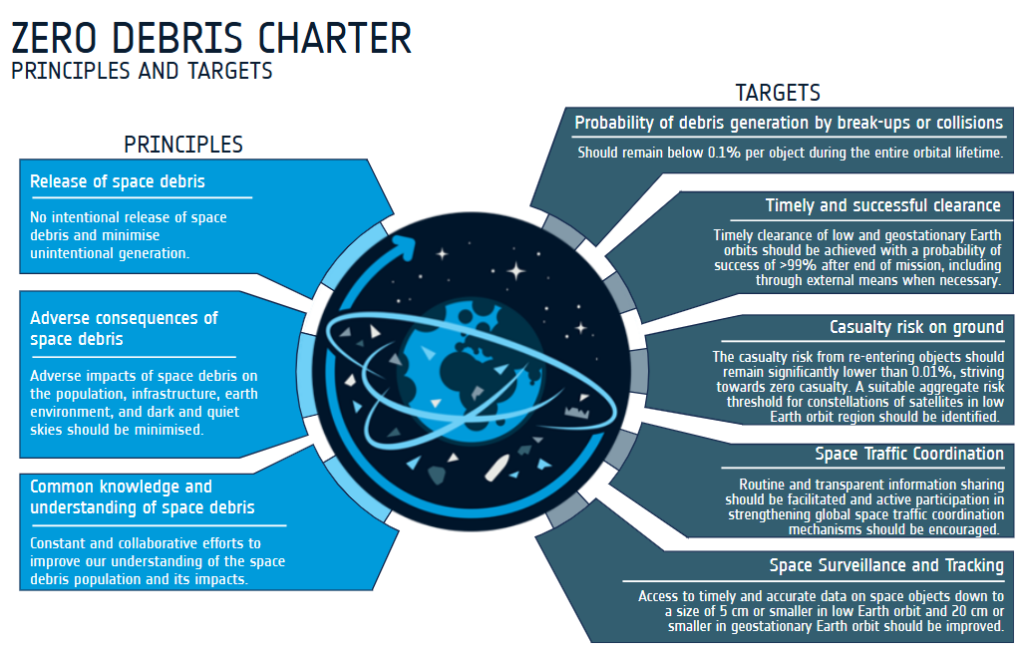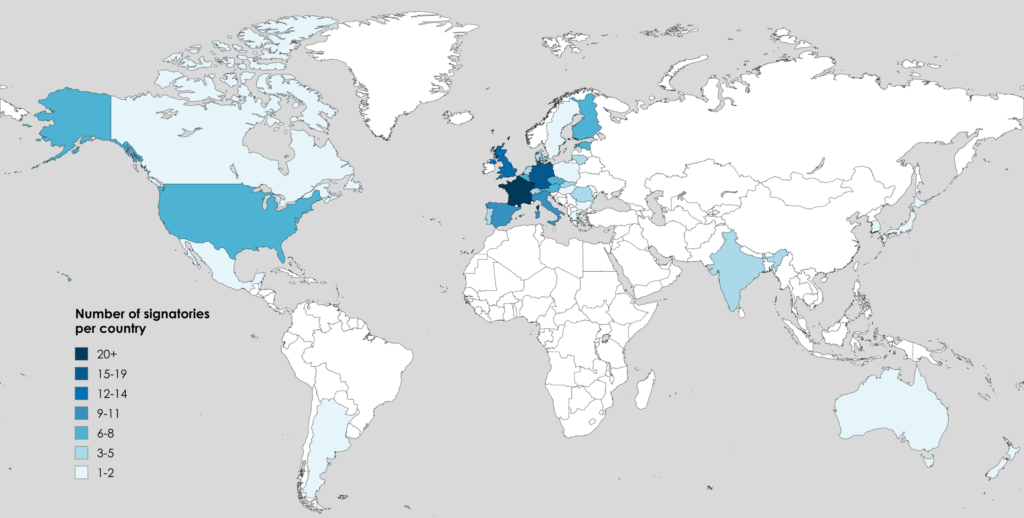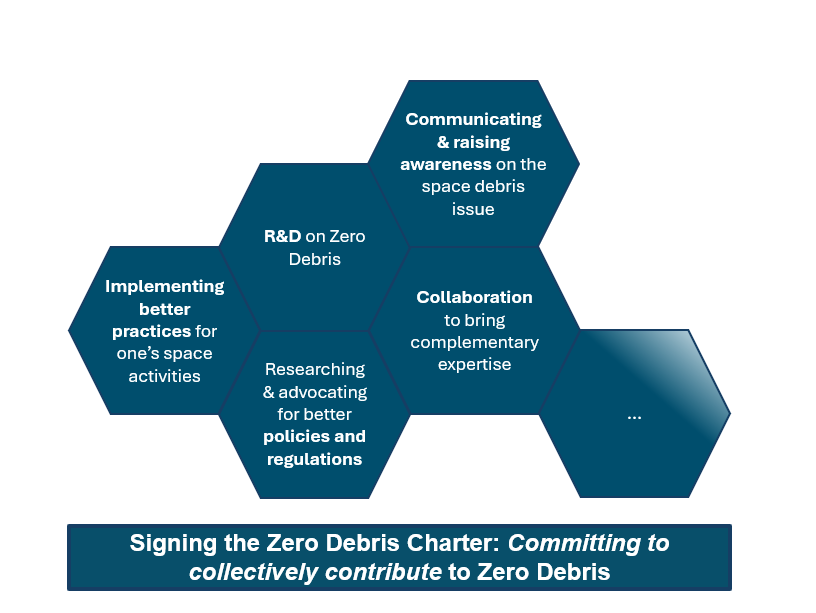As a non-regulatory body, ESA has no authority to enforce standards beyond its own missions. But that hasn’t stopped it from leading by example—and by collaboration.
This spirit of openness and co-creation gave rise to the Zero Debris Charter: a non-binding yet ambitious framework that sets out shared principles and measurable targets for achieving Zero Debris by 2030. ESA played the role of facilitator, offering tools and support through its activities.
By April 2025, over 160 organisations, including 20 national governments, had signed the Charter. More than 100 stakeholders took part in its development—from agencies and academia to startups and industrial stakeholders.
Constructing the Zero Debris Charter: A slow and incremental process
The charter wasn’t written overnight—or by ESA alone. The Zero Debris Charter is “written by and for the community” with the aim of shaping the global consensus on space sustainability.
The process kicked off with a launch webinar on 10 July 2023, where ESA shared a “draft zero” for comment. Over the following two months, nearly 200 contributions poured in from across Europe and beyond during an open partner review.
From this, four co-development workshops followed in Paris on 4 September, online on 19 and 29 September and at ESA’s ESTEC technical heart in the Netherlands on 16 October 2023. Each session brought together around 35 organisations to co-shape the charter.

ESA was represented during the workshops by its Head of Space Safety, Holger Krag, who was only one voice among many. Quentin Verspieren, ESA’s Space Safety Programme Coordination Lead, chaired the sessions as a moderator.
What makes the Zero Debris Charter unique is that it is not owned by ESA. It belongs to the global space community. Participation was open to all, beyond European borders—making this a truly international effort to tackle one of the most pressing challenges.
Principles and Targets of the Zero Debris Charter
The Zero Debris Charter establishes a unified framework to guide global efforts toward a sustainable space environment by minimizing the generation and impact of space debris. It is structured around three core principles and five key targets:

The principles are intended to steer the collective endeavour, providing a shared foundation for action. The targets, jointly defined, serve as measurable goals to track progress and ensure alignment toward a common, sustainable future in space.
Where does the Zero Debris Charter stand today?
By April 2025, the charter has over 160 signatories across 33 countries, including 20 national governments.

Join the Zero Debris community
What does it mean to be a signatory of the charter?

Becoming a signatory of the Zero Debris Charter signifies a public and proactive commitment to fostering a sustainable space environment. It means actively contributing to the collective effort to reduce the creation and impact of space debris through concrete, meaningful actions.
How to join the Zero Debris community ?
As stated in paragraph 3.2 of the Charter, “any entity demonstrating a strong commitment to advancing space safety and sustainability” is welcome to sign the Charter and become part of the Zero Debris Community—“without requiring the agreement of existing partners.”
That said, a few conditions must be met in order to become a signatory:
- Only organisations – not individuals – are eligible to sign the Zero Debris Charter.
- Only authorised representatives can register to express their intention to sign the charter
Once registered, the signing process can take place either remotely or in person during an official signing ceremony.
Want to sign up your entity to the Zero Debris Charter? Register your intent now.
For questions on joining the Charter, contact the Protect team at Protect@esa.int.
